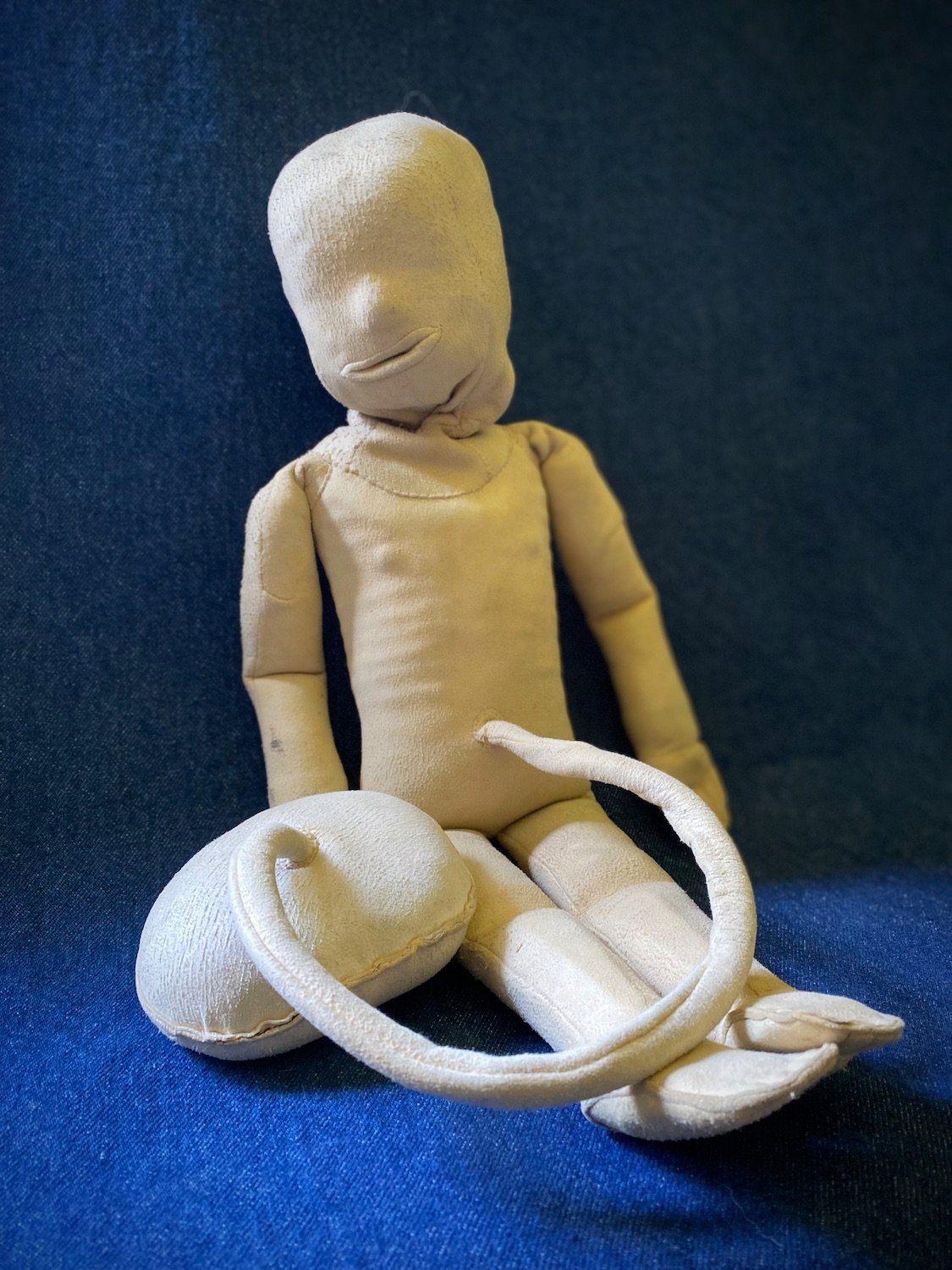 Image 1 of 6
Image 1 of 6

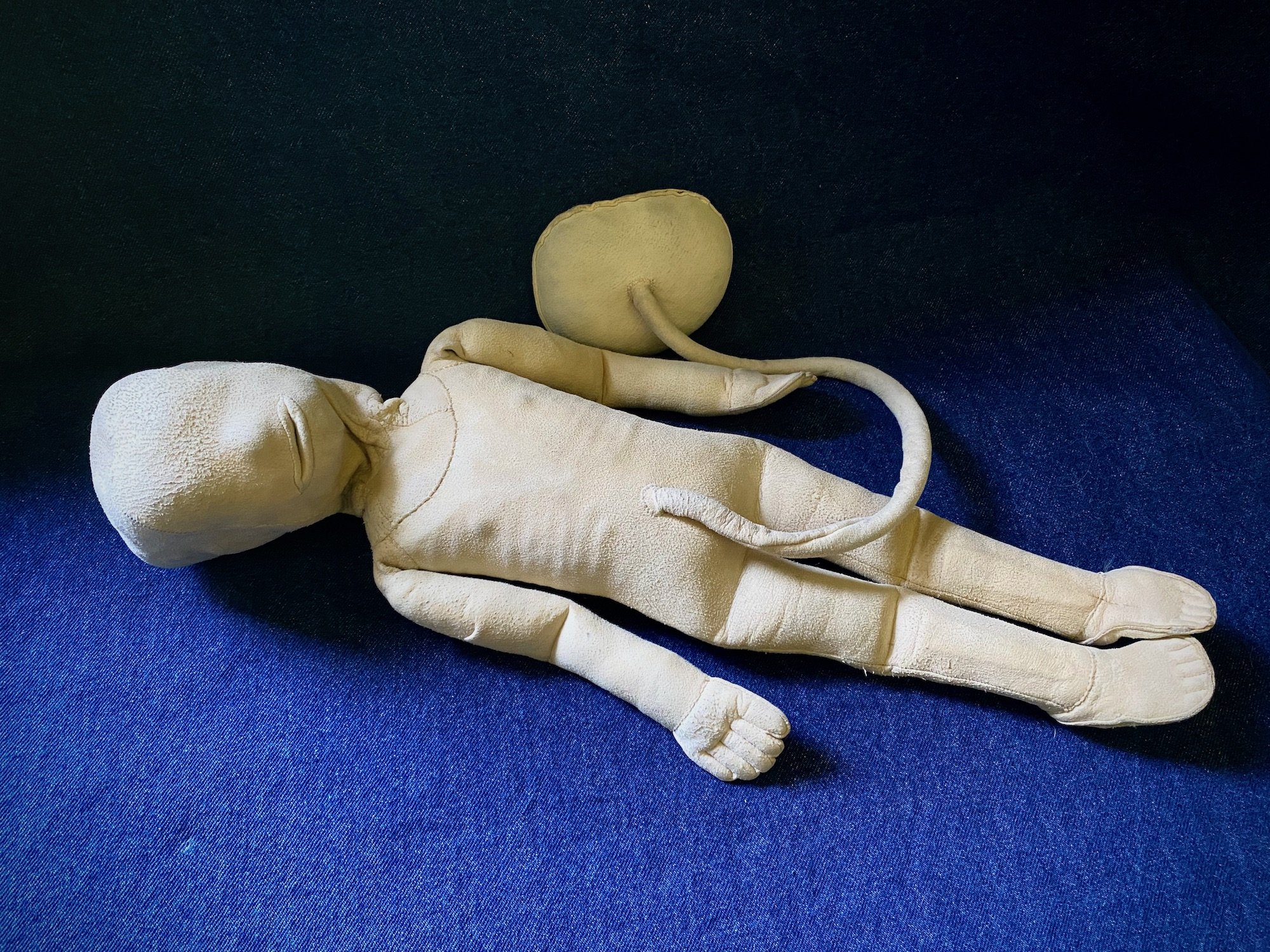 Image 2 of 6
Image 2 of 6

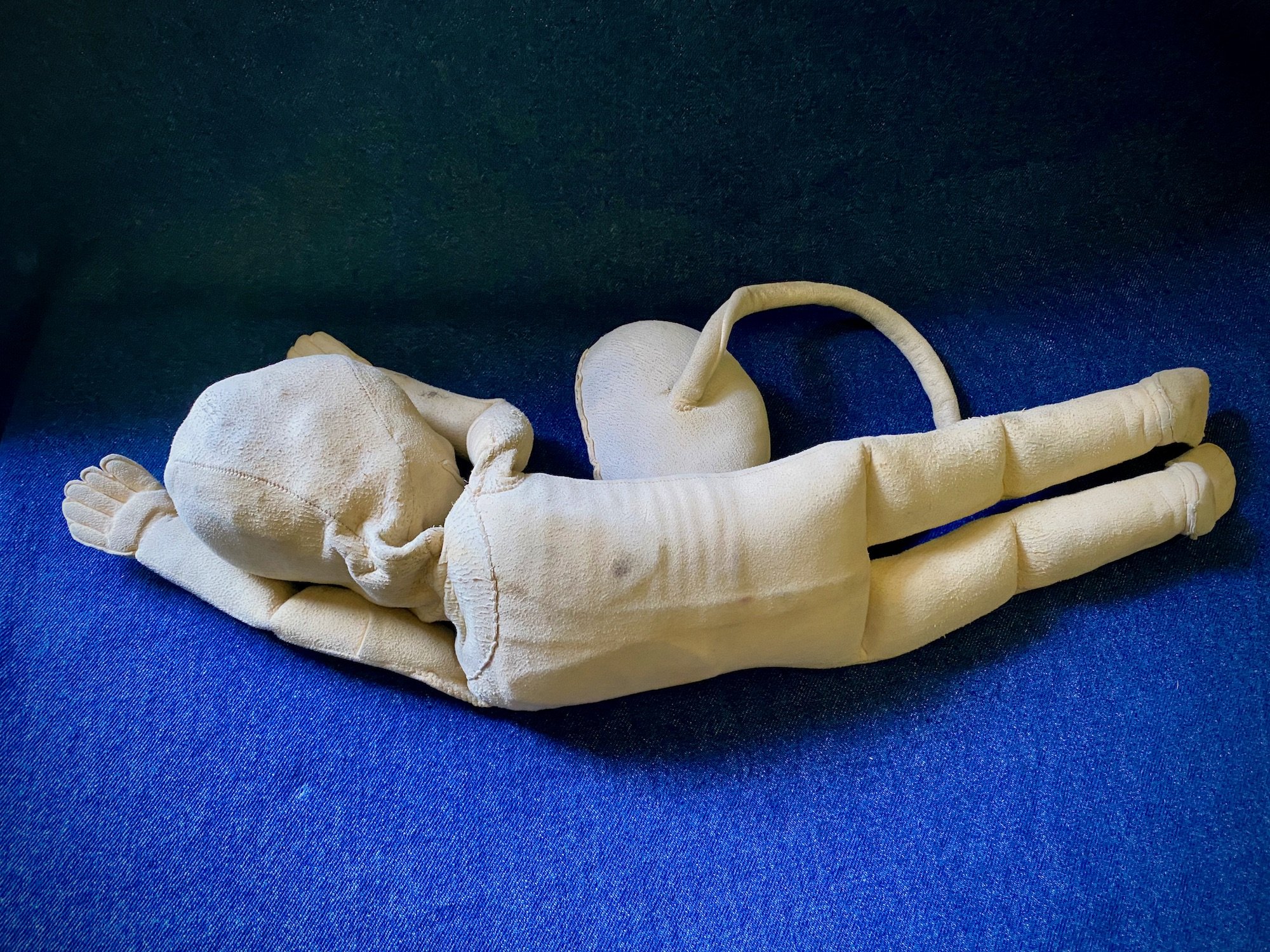 Image 3 of 6
Image 3 of 6

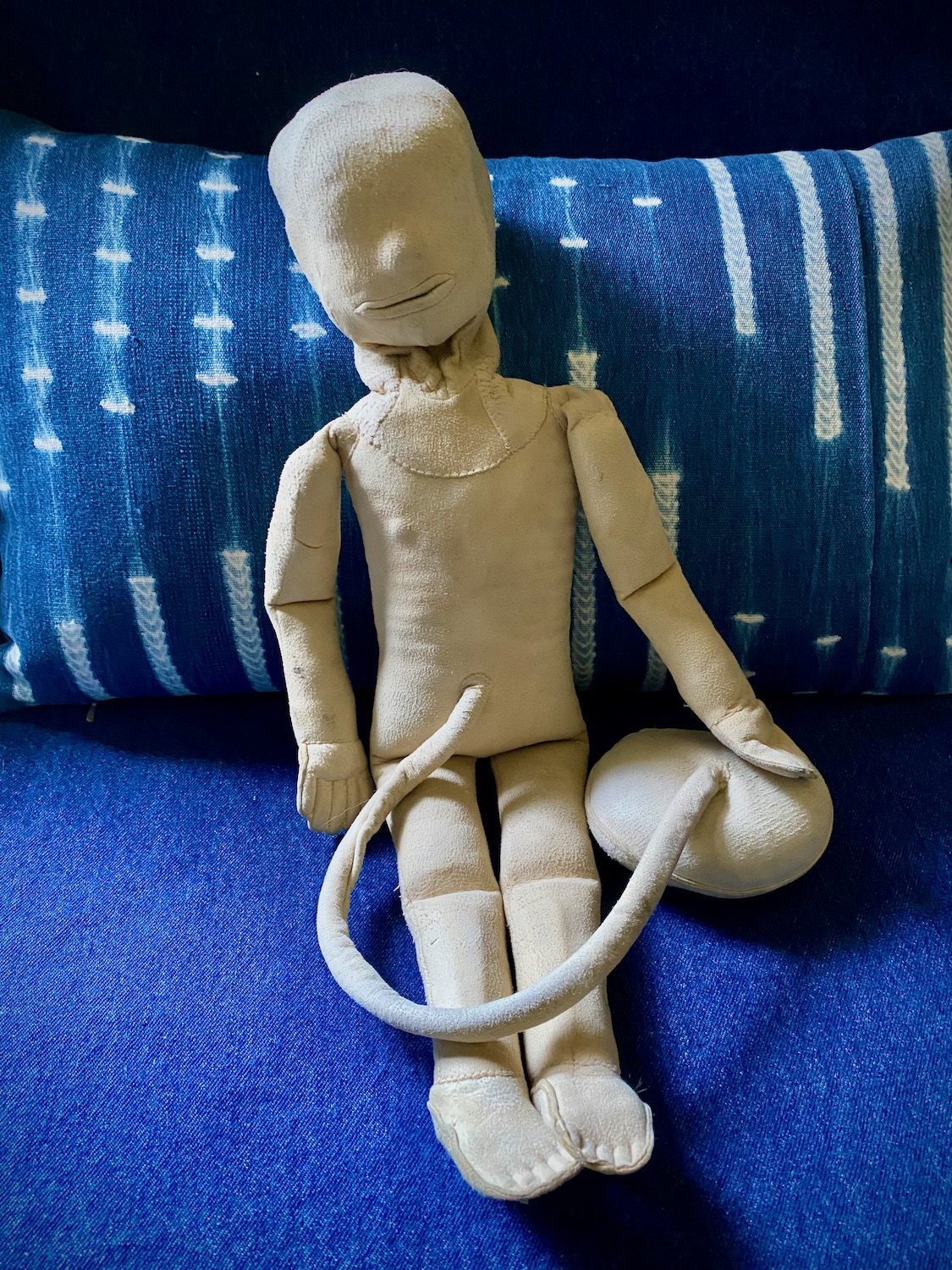 Image 4 of 6
Image 4 of 6

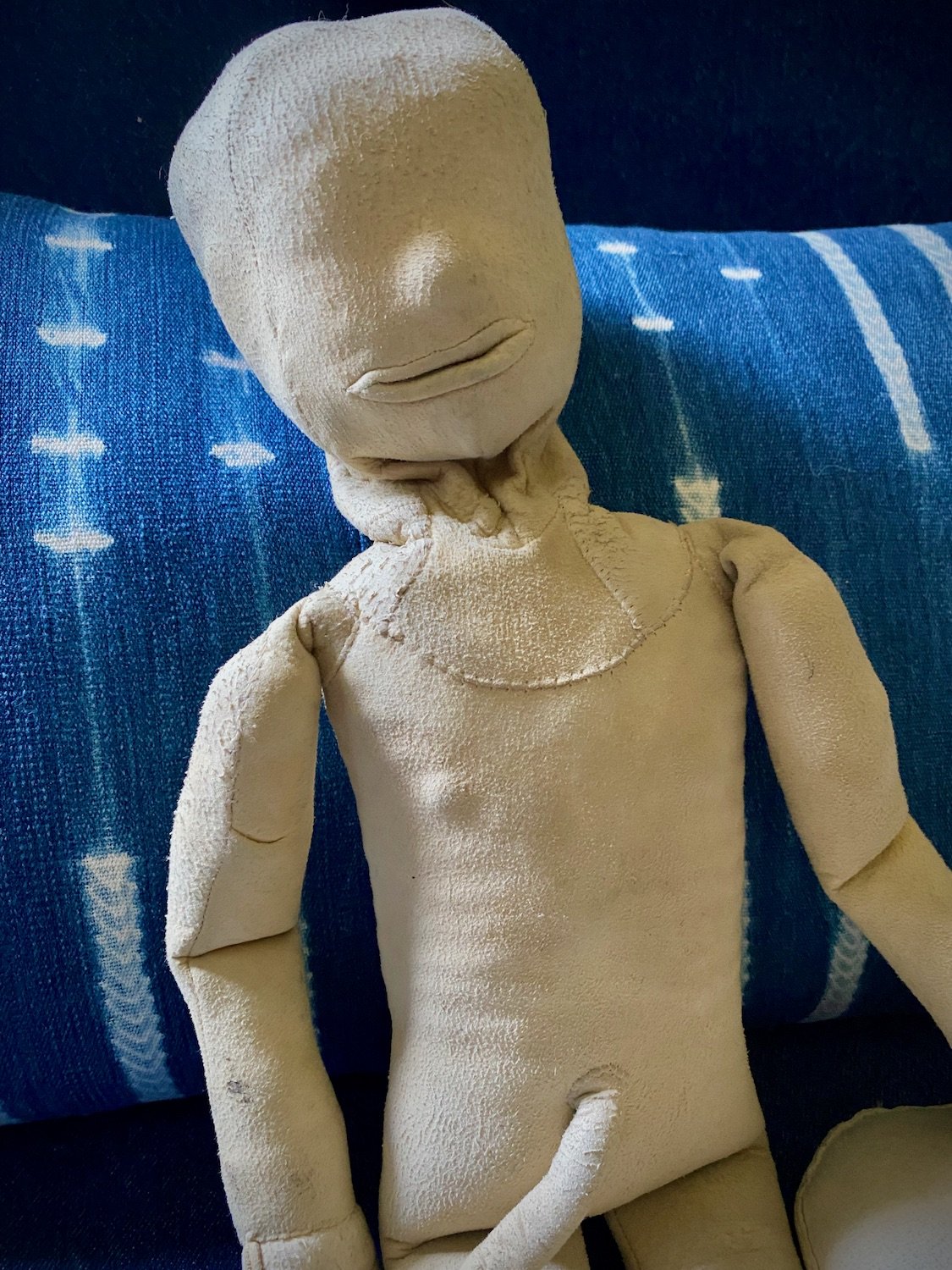 Image 5 of 6
Image 5 of 6

 Image 6 of 6
Image 6 of 6







Chamois Fetal Doll
Obstetrical models (or mannequins, or “dolls”) have been used to instruct midwives in the art of delivering newborns since the 18th century (and probably earlier). Madame du Coudray, midwife to Louis XV, designed one of the most famous early obstetrical models (see image). It included a lower abdomen with a uterus, fetus, placenta — even an extra set of twins! She also wrote a seminal textbook on delivery techniques, Abrégé de l’art des Accouchements (Summary of the Art of Childbirth).
This handmade, chamois-covered fetal doll (with placenta) dates from the early 20th century. It was found in Mexico, but we do not know where it was originally made (an identical doll is in the collection of the Museum of Healthcare, Kingston, Ontario). The head has the critical features that midwives and medical students need to be able identify by touch: mouth, nose, eye sockets, and fontanelles. In class, they would be asked to palpate the doll inside an artificial pelvis, in order to identify the presentation of the fetus. Fetal teaching dolls are still made and used today, but they are not nearly as cool as this one. We are reminded of the grotesque cloth figures created by the great artist Louise Bourgeois.
(Note that the last image is of Madame du Coudray’s 18th century mannequin, included for informational purposes.)
21” x 8” x 4”
Obstetrical models (or mannequins, or “dolls”) have been used to instruct midwives in the art of delivering newborns since the 18th century (and probably earlier). Madame du Coudray, midwife to Louis XV, designed one of the most famous early obstetrical models (see image). It included a lower abdomen with a uterus, fetus, placenta — even an extra set of twins! She also wrote a seminal textbook on delivery techniques, Abrégé de l’art des Accouchements (Summary of the Art of Childbirth).
This handmade, chamois-covered fetal doll (with placenta) dates from the early 20th century. It was found in Mexico, but we do not know where it was originally made (an identical doll is in the collection of the Museum of Healthcare, Kingston, Ontario). The head has the critical features that midwives and medical students need to be able identify by touch: mouth, nose, eye sockets, and fontanelles. In class, they would be asked to palpate the doll inside an artificial pelvis, in order to identify the presentation of the fetus. Fetal teaching dolls are still made and used today, but they are not nearly as cool as this one. We are reminded of the grotesque cloth figures created by the great artist Louise Bourgeois.
(Note that the last image is of Madame du Coudray’s 18th century mannequin, included for informational purposes.)
21” x 8” x 4”